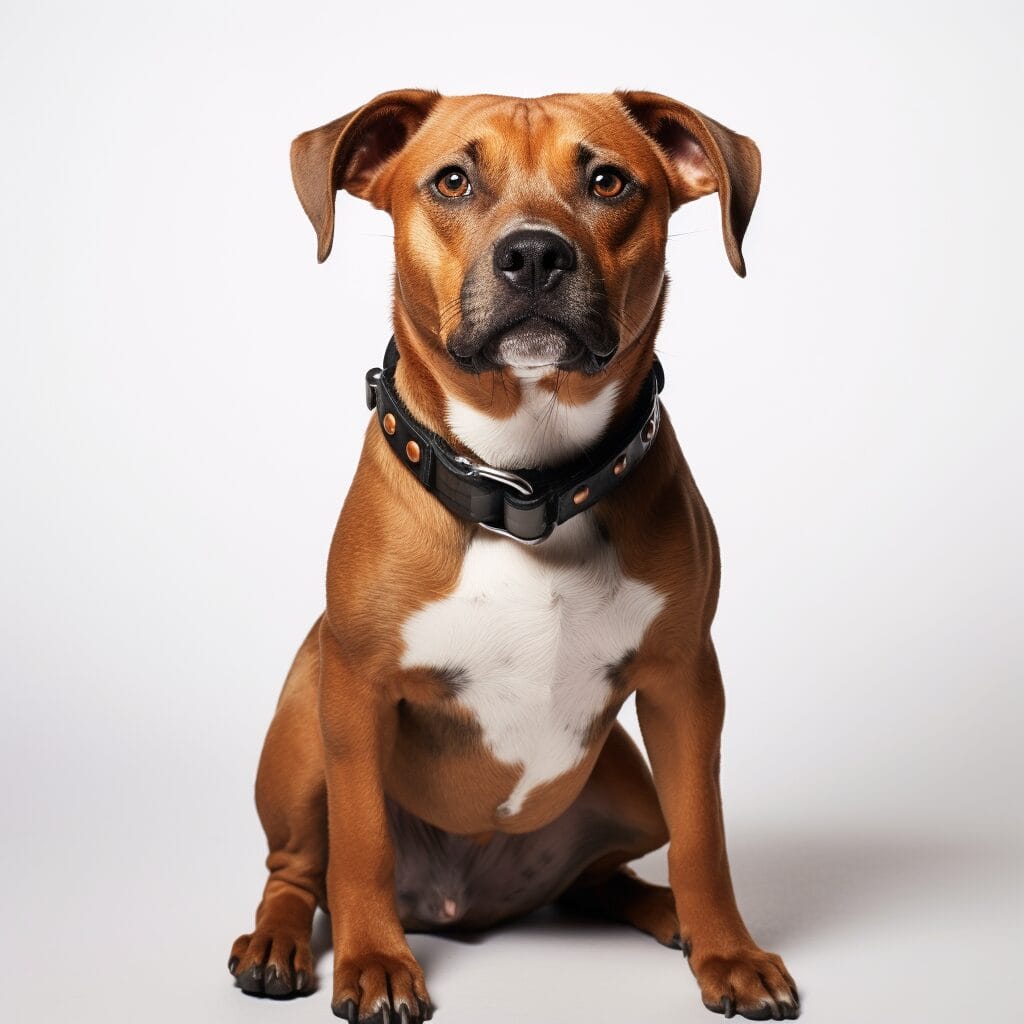The question of whether they should wear a dog collar can spark heated debates. Historically, dog owners have been advised against leaving collars and id tags on their pets while crated due to potential safety hazards. However, recent discussions have shed light on the importance of identification and safety within the home environment. This blog post delves into this contentious topic, providing insights into both sides of the argument and offering practical considerations for pet owners.
While some argue that collars pose risks during crate training, others emphasize the necessity of identification tags and potential escape prevention. We’ll explore these contrasting viewpoints and provide valuable tips for ensuring your dog’s well-being inside their crate. Join us as we navigate through this polarizing issue to help you make an informed decision about your pet’s crate attire.
Should Dog Wear Collar in Crate?
Understanding the Risks of Collars and Crates
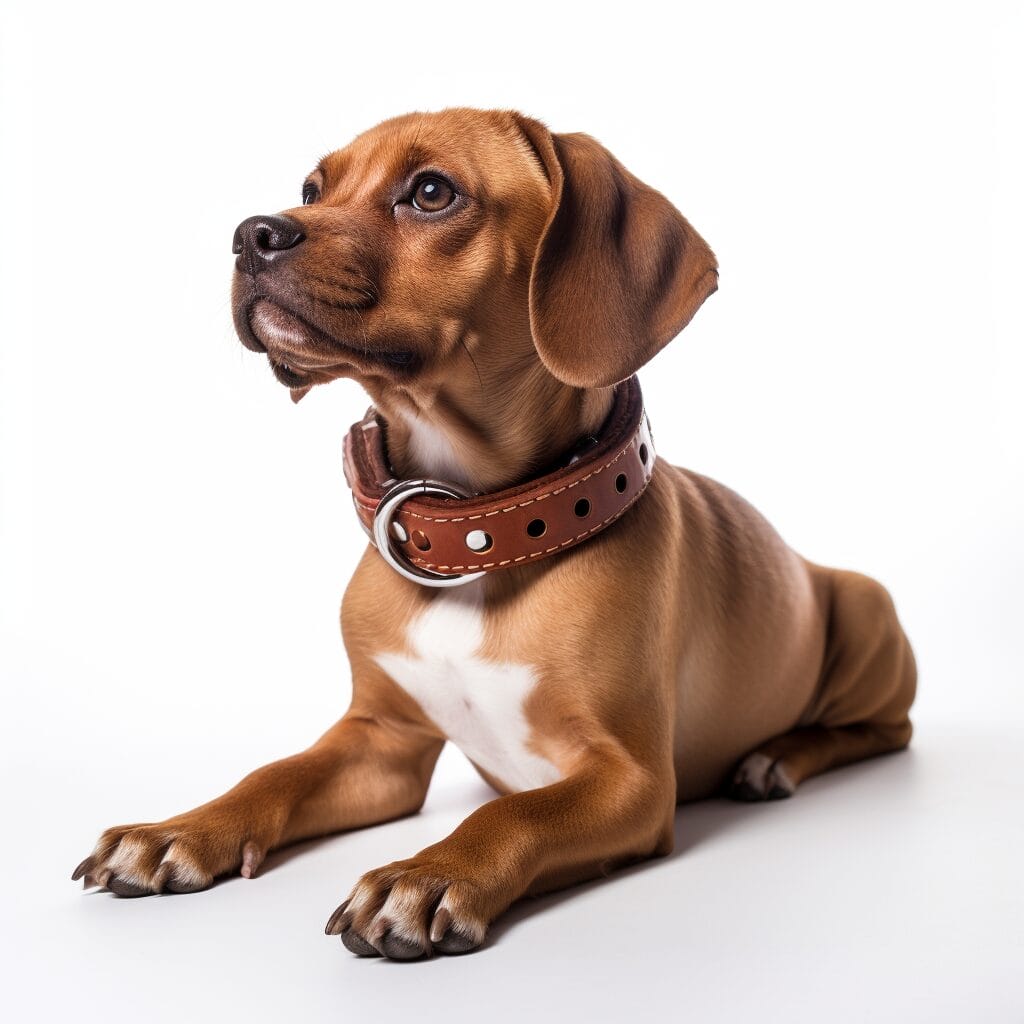
Strangulation Risk
Dogs wearing collars in crates face a potential strangulation risk. If a collar or chew gets caught on any part of the crate, it can lead to choking or even fatal injuries for the dog. Imagine your furry friend getting tangled up while trying to move around inside the crate.
While it may seem harmless, this scenario presents a clear danger that could be easily avoided by simply removing your dog’s collar before placing them in their crate.
Hazards of Unsupervised Dogs
Leaving unsupervised dogs with collars in crates can pose several hazards. Dogs are curious creatures and might try to chew or play with their collar, leading to entanglement issues. They might scratch at their necks due to discomfort caused by the collar, which could result in injury if left unattended.
It’s essential for pet owners to understand these risks and take necessary precautions when using crates for their dogs. While crates serve as safe spaces for pets when used appropriately, adding an unnecessary risk like keeping a collar on during crating undermines its purpose.
The Potential Dangers of Collars in Crates
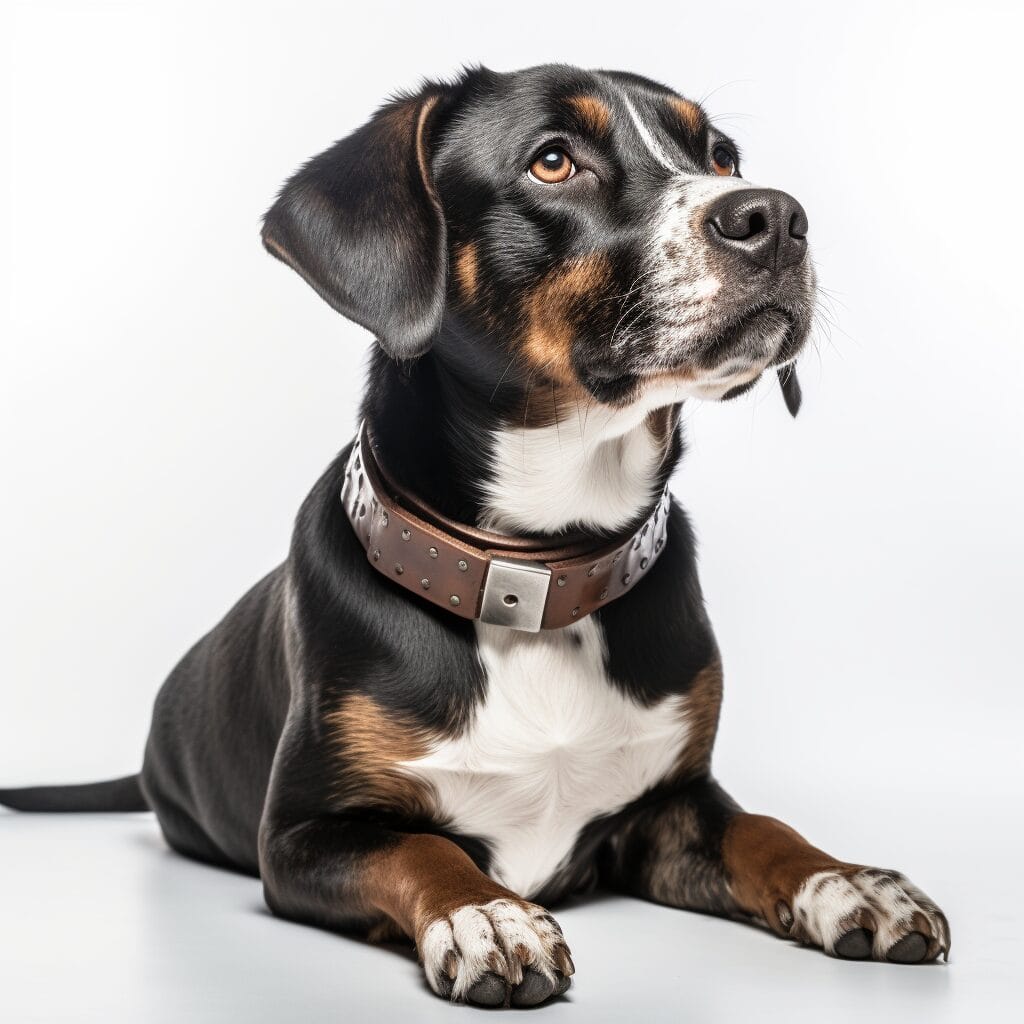
Risks of Getting Stuck
Placing a collar on your dog while they are inside a crate can pose several dangers. One major risk is that the collar may get caught in the crate’s doors or latches, leading to potential injury. For instance, if the collar gets entangled with the crate’s hardware, it could cause discomfort or even panic for your furry friend. Imagine your dog feeling trapped and struggling to free themselves from this situation.
Another scenario is when a dog wearing a collar tries to escape from their crate by pushing against the door. In such cases, there’s an increased likelihood of the collar getting snagged in between metal bars or mesh openings. This not only causes distress but also puts them at risk of physical harm.
Anxiety and Choking Hazards
It’s important to note that dogs are naturally curious and may attempt to chew on their collars out of boredom or anxiety while confined in a crate. When left unattended, this behavior increases the chances of them getting tangled up in their own collars, which can lead to choking hazards.
Moreover, some dogs might experience heightened levels of stress when wearing collars inside crates due to feelings of confinement and restriction. This emotional distress can manifest as whining, pacing back and forth within the crate, or excessive panting – all signs that indicate unease.
In addition:
- Dogs’ safety should always be prioritized over convenience.
- Harnesses are safer alternatives for restraining dogs during crating.
- Consider using breakaway collars designed specifically for crating purposes.
Importance of Removing Collars Before Crating
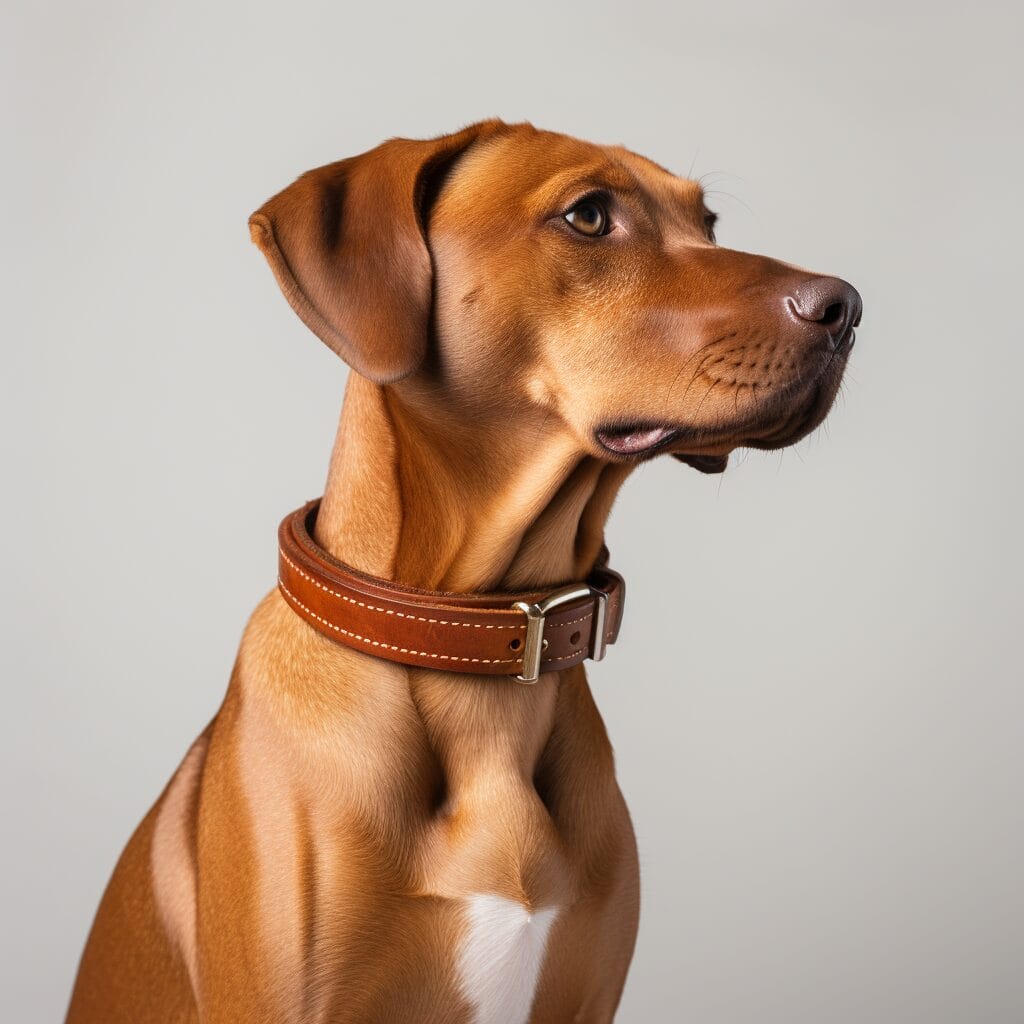
Preventing Harm
Removing your dog’s collar before crating is crucial to prevent potential harm. Collars can get caught in the crate’s wires or bars, leading to choking or strangulation. Even breakaway collars, designed to release when pressure is applied, may not always work as intended.
It’s essential to ensure that your dog enters the crate without any collar, eliminating the risk of it getting entangled and injured. By taking this precaution, you are actively safeguarding your pet from unnecessary dangers during their time in the crate.
Eliminating Risks
By ensuring that your dog is collar-free in the crate, you eliminate various risks associated with leaving a collar on. Dogs left unattended in crates may try to scratch at their collar due to discomfort or anxiety, which could lead to paw injuries or even broken teeth if they manage to get a limb through the collar.
Moreover, metal buckles and tags on collars pose additional hazards inside a confined space like a crate. They can cause damage by scratching surfaces within the crate or injure the dog if they rub against them forcefully. Therefore, removing these items before crating ensures that such risks are entirely eliminated.
Setting Up a Safe Crate Environment
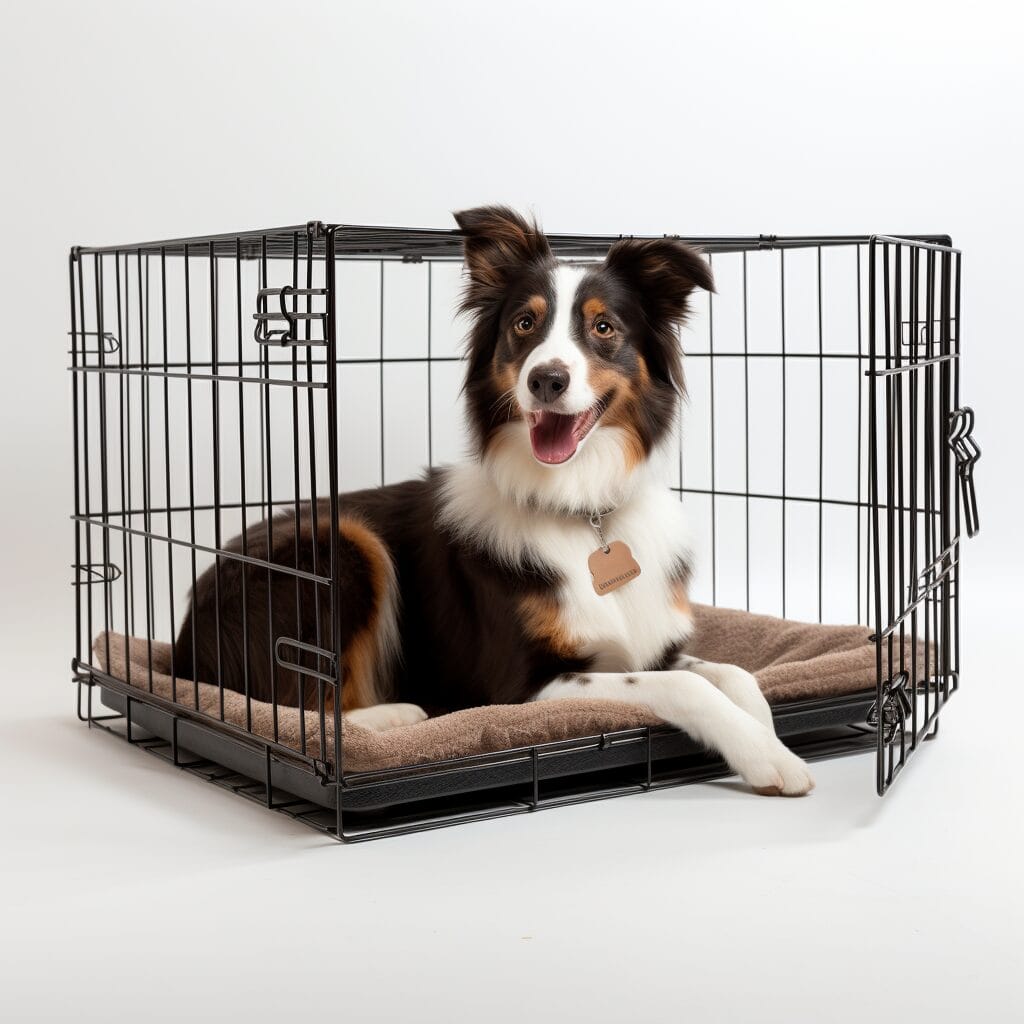
Selecting the Right Crate
Choosing the right crate is crucial. Look for a well-ventilated crate that allows your furry friend to see what’s happening around them. Ensure that the crate is appropriately sized, giving your dog enough room to stand up, turn around, and lie down comfortably. Avoid crates with sharp edges or protruding parts that could potentially harm your pet.
It’s important to consider your dog’s size and habits when selecting a crate. For example, if you have a puppy who is still growing, you may want to invest in an adjustable crate that can grow with them. If your dog has a habit of chewing on things when left alone, opt for a sturdy crate made of durable materials.
Choosing the Right Location
Once you’ve chosen the perfect crate, it’s time to find the ideal spot in your home for it. The goal is to create a safe and comfortable space for your pet while also ensuring their safety and security. Look for an area in your home that is away from high-traffic areas but still allows your dog to feel like they are part of the family.
Consider placing the crate in a quiet corner of the living room or bedroom so that your pet doesn’t feel isolated from household activities. This will help ease any anxiety they may have about being confined in their house while allowing them some peace and quiet when needed.
Ideal Bedding and Comfort in Your Dog’s Crate
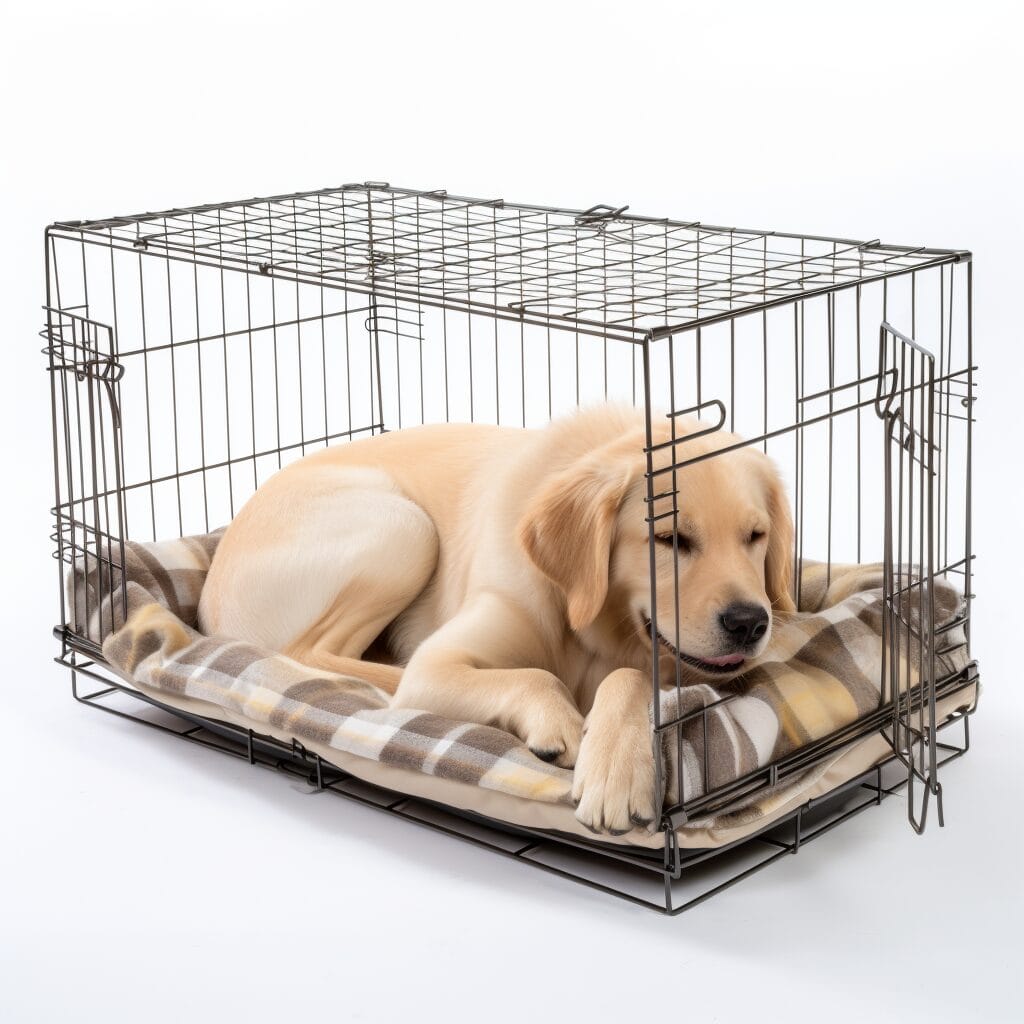
Safe and Comfortable Bedding
It’s essential to prioritize both safety and comfort. Opt for soft, washable bedding that provides a cozy surface for your dog to rest on. Avoid using blankets or mats with loose threads that can pose a choking hazard or be ingested by your furry friend.
Your dog‘s crate should be a safe haven, free from potential hazards like chicken bones or other items that could cause harm if chewed on. Therefore, ensure the bedding you choose is mess-free and doesn’t present any issues for your pet. For instance, avoid using materials that shed a lot of fibers as they can be irritating when ingested.
Providing Comfort for Your Dog
It’s important to consider the needs of your four-legged companion when selecting bedding for their crate. Just like humans, dogs appreciate having a comfortable place to rest after a long day of play and activities. By providing suitable bedding, you’re creating an environment where your dog feels secure and relaxed.
Imagine coming home after a tiring day at school only to find an uncomfortable bed waiting for you – not ideal! Similarly, ensuring your problem child dog has soft and comfy bedding in their crate can make all the difference in their overall well-being. It helps them unwind without feeling restless due to discomfort.
Ensuring Proper Hydration Without Risk
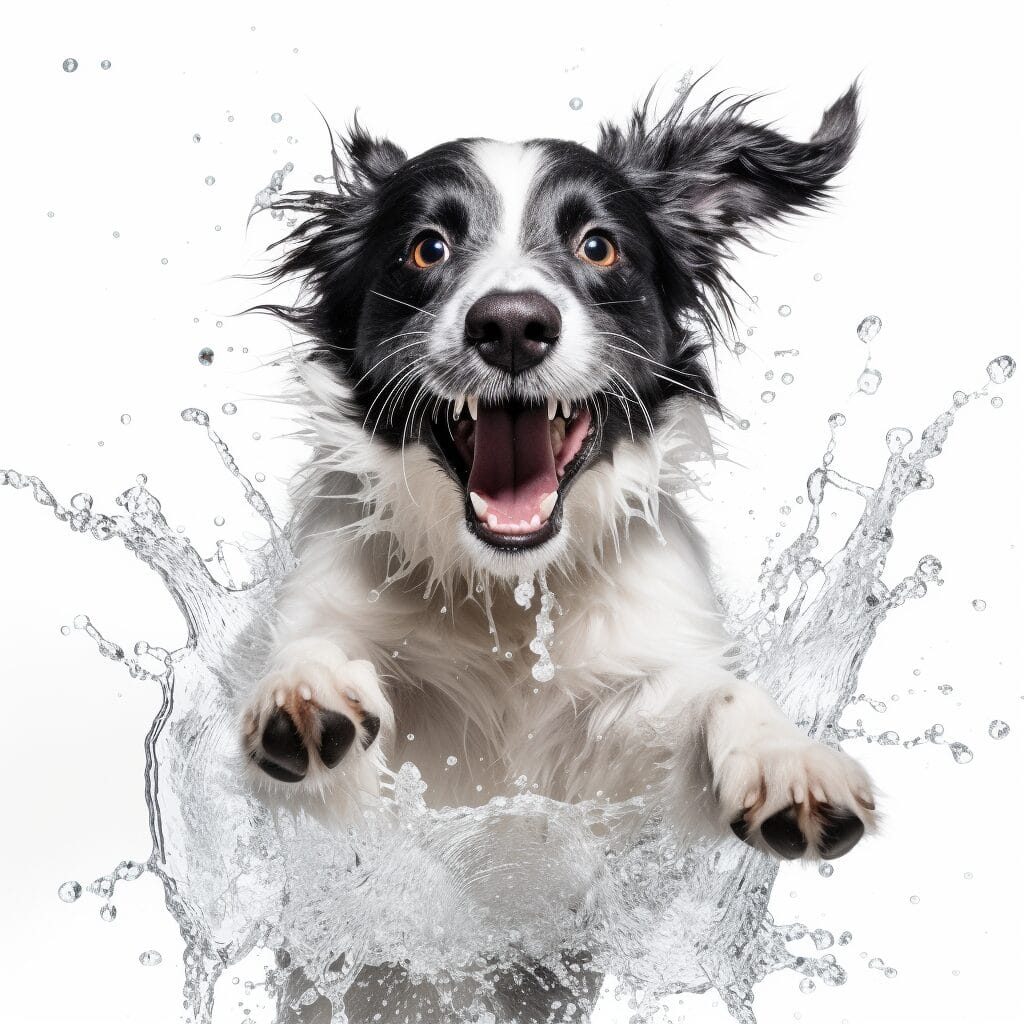
Offering Water Before Crating
Before placing your dog in the crate, it’s essential to offer water to prevent dehydration. However, once crated, removing the water bowl is crucial to avoid spills and accidents inside the crate. This approach helps maintain a clean and comfortable environment for your pet.
Dogs should have access to water at all times, butManaging their hydration levels is important. By offering water before crating and then removing the bowl during crate time, you can ensure that your dog stays hydrated without creating a mess or risking discomfort.
Monitoring Hydration Levels
It’s vital to monitor your dog’s hydration levels regularly. Outside of crate time, make sure to provide ample opportunities for them to drink water. Observing signs of dehydration such as dry gums or excessive panting can help you determine if they need more frequent access to water.
To make hydrating your dog easier outside of crate time, consider using a spill-proof water dispenser that can be attached directly to the crate. This not only minimizes spillage but also ensures that your furry friend has constant access to fresh drinking water whenever they need it.
Microchipping as an Alternative to Collars
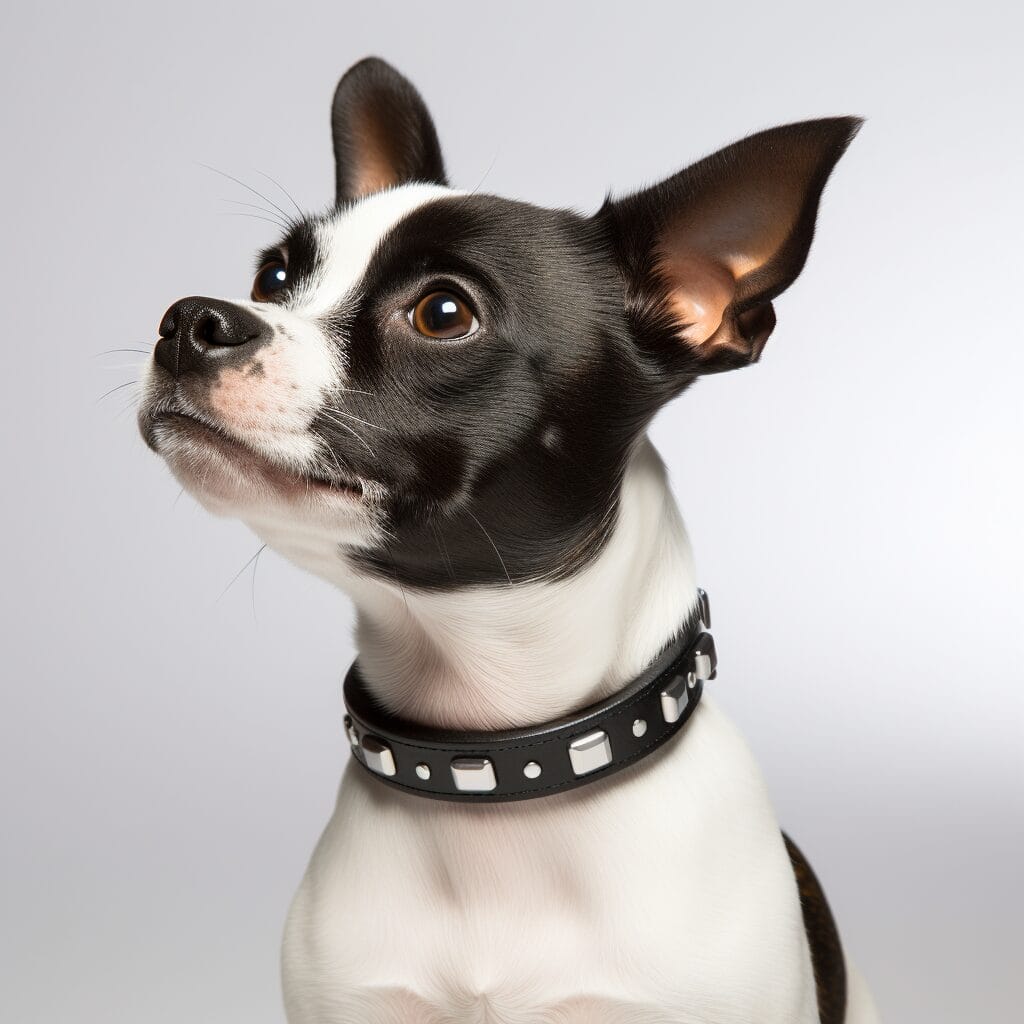
Permanent Identification
Microchipping your dog is a great option for pet owners concerned about the risks associated with wearing a collar in a crate. Unlike collars, microchips provide permanent identification without the potential hazards of getting caught or tangled. This ensures that your dog can be identified even if they manage to slip out of their collar.
Microchipping offers peace of mind for preventive vet care and is especially beneficial for dogs who tend to chew on their collars. By opting for microchipping, you eliminate the risk of your dog ingesting parts of their collar, which could lead to digestive issues or choking hazards. With this form of identification, there’s no need to worry about replacing lost ID tags or ensuring that they are securely clipped onto the collar.
Reliable Form of Identification
It’s essential to ensure that your dog’s microchip information is up-to-date at all times. This added security measure guarantees that if your furry friend ever gets lost and ends up in a shelter or veterinary clinic, the contact details linked to their microchip will enable you to be reunited promptly.
While taking walks outside the home environment may require attaching a leash and harness rather than relying solely on a collar, having your pet microchipped provides an extra layer of protection against loss. In situations where collars might not be suitable due to clothing restrictions or safety concerns (such as during playtime), microchipping remains indispensable.
Tips for Choosing Safe Crate Accessories
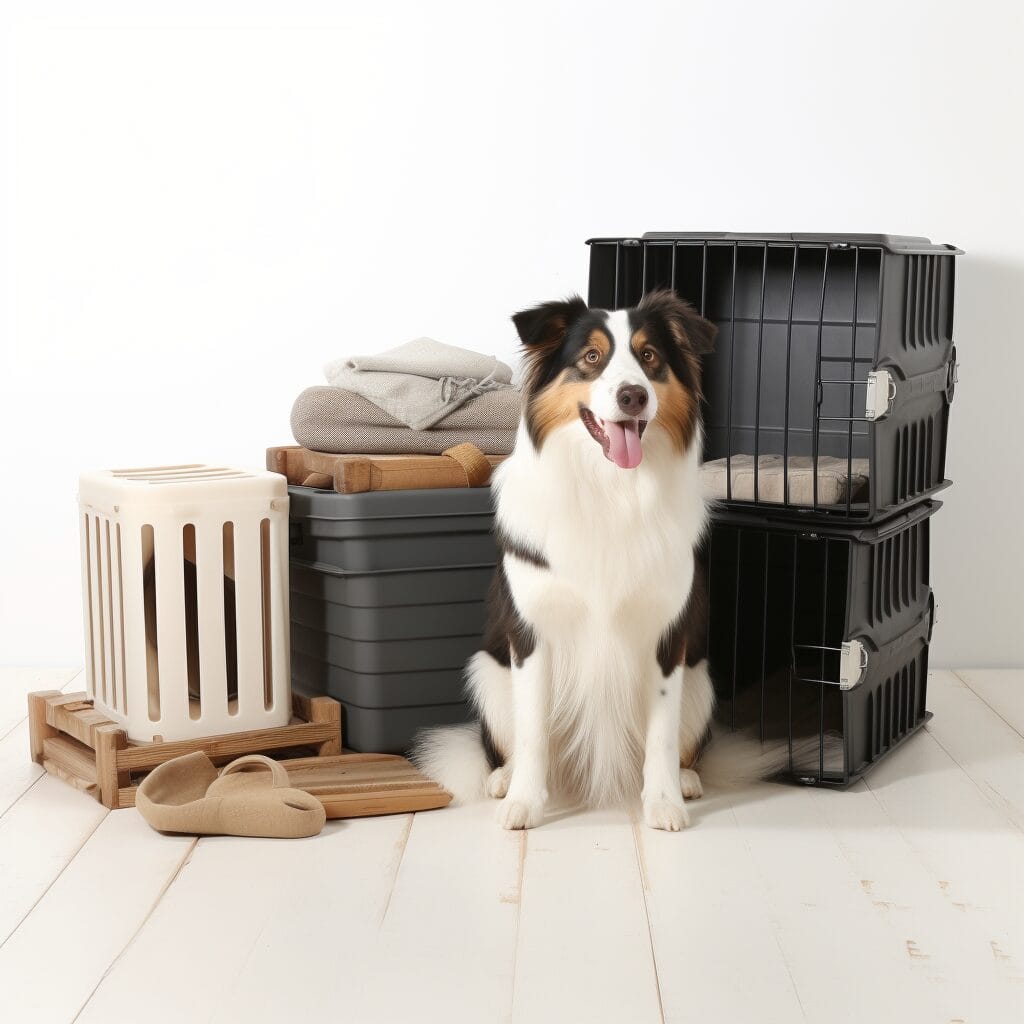
Purpose of Collars in Crates
. A collar can be beneficial inside a crate, especially if your dog is not microchipped. In case your dog manages to escape from the crate, having a collar with identification tags can help ensure their safe return.
Some owners prefer their dogs to wear collars at all times for easy leash attachment during walks or outings. However, it’s essential to choose the right type of collar and ensure that it doesn’t pose any risks when used inside a crate.
Considerations for Safe Crate Accessories
Selecting suitable accessories for use in crates is crucial for ensuring your pet’s safety and comfort. When choosing whether a dog should wear collar in crate, remember these important considerations:
- Specifically Designed: Opt for accessories specifically designed for use in crates, such as breakaway collars which come apart easily if they get caught on something.
- Choking Hazard: Avoid accessories with small parts that could pose a choking hazard. For example, decorative charms or tags attached to collars may present a risk.
- Durable and Non-Toxic: Choose durable and non-toxic accessories that enhance safety and comfort. This includes sturdy yet comfortable collars made from high-quality materials.
It’s important to prioritize safety when selecting accessories such as collars for use within crates. By considering factors like design specificity, potential choking hazards, durability, and material safety, you can make informed choices regarding what goes into your pet’s living space.
Creating a Secure and Low-Traffic Crate Area

Choosing the Right Location
Choosing the right location for your dog’s crate is crucial. Opt for a quiet area away from heavy foot traffic, such as hallways or main living areas. This will help reduce potential disturbances around the crate area, creating a secure and calming environment for your pet. By placing the crate in a low-traffic spot, you can minimize stress and anxiety for your dog.
Placing the crate in an area with minimal activity also allows your dog to have some peace and quiet when they need it most. Imagine if you were trying to relax but constantly surrounded by noise and movement – it would be challenging! The same goes for our furry friends; they need their own space where they can feel safe and undisturbed.
Ensuring Security and Comfort
In addition to choosing a low-traffic location, it’s essential to create a secure and calming environment around the crate. Consider adding comforting elements like soft bedding or familiar toys inside the crate to make it more inviting for your pet. These items can provide reassurance while helping them feel at ease when spending time in their designated space.
Moreover, free access should be given only after ensuring that all other security measures are taken care of within this setting.
Closing Thoughts
You’ve learned about the potential risks of leaving a collar on your dog while crated, and the importance of creating a safe and comfortable environment for your furry friend. Removing your dog’s collar before crating can prevent accidents and ensure their safety. Considering alternatives like microchipping can provide a secure form of identification without the risks associated with collars in crates. By implementing these tips and being mindful of your dog’s safety, you can create a secure and low-stress crate area for them.
Now that you have a better understanding of the risks and solutions related to collars in crates, take action to ensure your dog’s well-being. Make it a habit to remove their collar before crating, explore microchipping as an alternative, and create a cozy space that promotes relaxation. Your furry companion will thank you for providing a safe and comfortable environment. Take these steps to heart, and watch your dog thrive in their crate!
Frequently Asked Questions
Should I leave a collar on my dog when crating?
It’s best to remove your dog’s collar before crating to avoid potential risks. Collars can get caught in the crate, posing a choking hazard or causing injury. Ensuring your dog’s safety should be the top priority when crating.
Is microchipping a good alternative to collars for identification?
Yes, microchipping is an excellent alternative as it provides permanent identification even if your dog loses its collar. It’s like having an insurance policy – providing peace of mind that your furry friend can always find their way back home.
What are safe accessories to use in my dog’s crate?
Choose soft bedding and toys without small parts that could be ingested. Avoid using collars, harnesses, or any other items that may pose a risk of entanglement or injury while your pet is crated.
How do I ensure proper hydration for my crated dog without risks?
Use spill-proof water bowls designed for crates and make sure they are securely attached. Consider freezing water in the bowl so it melts gradually, providing hydration without creating a mess.
Why is it important to create a low-traffic crate area?
A low-traffic area reduces disturbances and helps maintain a calm environment for your dog during crate time. This minimizes stress and enhances their sense of security within their designated space.

